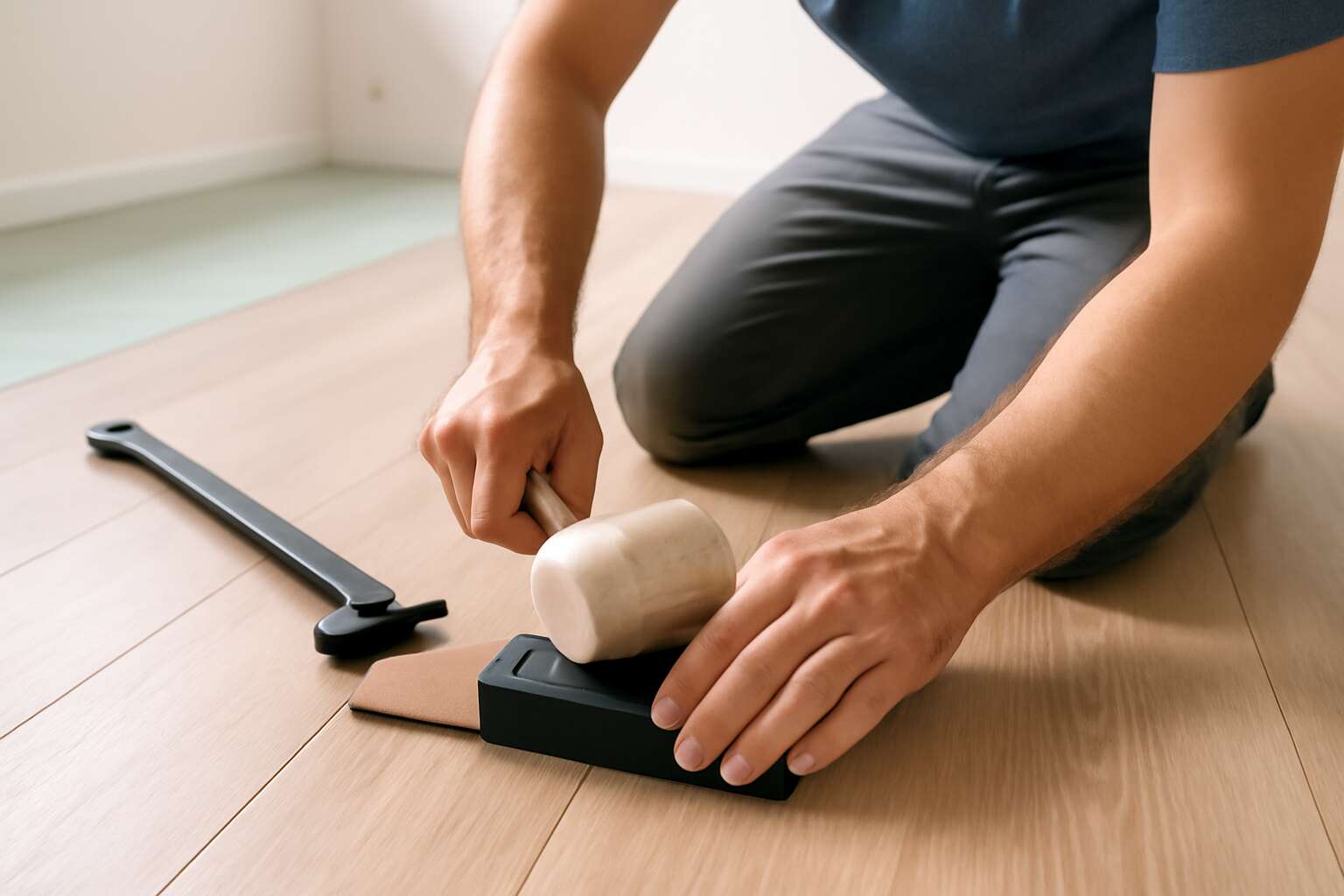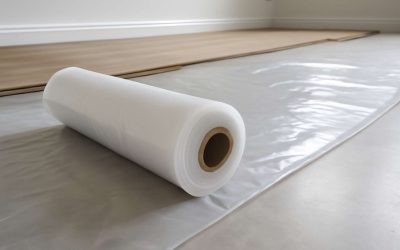Preparing for Laminate Flooring Installation
Assessing Your Space – Measuring the Area and Planning the Layout
Embarking on the journey of how to put laminate flooring begins long before the first plank is laid. It starts with a meticulous assessment of your space—an act of both measurement and mindful planning that transforms a simple task into an art form. Accurate measurements are the foundation, ensuring that your new flooring fits perfectly without unwelcome surprises. A well-planned layout not only enhances aesthetic appeal but also minimizes waste, making your project more efficient and cost-effective.
To accurately assess your area, consider every nook and cranny, including doorways, transitions, and irregular corners. For a seamless finish, it’s advisable to measure the length and width of each section and note any obstructions. Once measurements are complete, you can determine how many laminate flooring planks you’ll need, and decide on the best layout to enhance the natural flow of your space. This stage is crucial—understanding how to put laminate flooring effectively hinges on these preparatory steps, paving the way for a smooth installation process.
Gathering Tools and Materials – Essential Tools and Supplies Needed
Preparing for laminate flooring installation might not be as glamorous as choosing the perfect planks, but it’s arguably the most critical step—think of it as laying the foundation for your very own parquet palace. Gathering the right tools and materials is essential, and skipping this part is like trying to bake a cake without flour—sure to end in disaster. To do it right, arm yourself with a tape measure, saw, spacers, and a hammer. Trust me, these aren’t just fancy gadgets—they’re your best friends on this journey.
- Measuring tape: For accurate dimensions.
- Saw: To cut planks to fit tricky corners.
- Spacers: Ensuring even expansion gaps.
- Hammer or mallet: For snug fits and gentle persuasion.
Knowing how to put laminate flooring involves more than just snapping planks together; it’s about preparing your arsenal of tools to ensure a seamless, professional finish with minimal fuss.”
Checking Subfloor Conditions – Ensuring a Flat and Dry Surface
Before embarking on the journey of how to put laminate flooring, it’s vital to scrutinize your subfloor with meticulous care. A flawless finish hinges on a surface that is both flat and dry—think of it as the canvas upon which your craftsmanship will shine. An uneven or damp subfloor can turn your project into a costly, frustrating ordeal. In South Africa, where moisture levels vary dramatically from region to region, this step becomes even more crucial.
Start by inspecting for any cracks, dips, or bumps—these imperfections can cause the laminate planks to buckle or creak over time. Use a long spirit level or straightedge to identify high or low spots. If moisture is detected, especially in areas prone to dampness like kitchens or basements, address it immediately. Installing a moisture barrier might be necessary to prevent future issues.
Ensuring your subfloor is both flat and dry is the foundation of successful laminate flooring installation. When you know how to put laminate flooring on a stable, even surface, the final result will not only look stunning but will stand the test of time. Remember, the key to a seamless finish lies in preparation—because the best craftsmanship begins with a solid foundation.
Acclimating Laminate Planks – Getting the Flooring Ready for Installation
Before laying the first plank, it’s crucial to acclimate your laminate flooring properly—think of it as a polite greeting before a long visit. Laminate planks are sensitive to environmental changes; they expand and contract based on humidity and temperature. In South Africa’s diverse climate, this step becomes even more vital. Allow the unopened boxes to rest in the room where they will be installed for at least 48 hours, ensuring they reach a stable temperature and humidity level.
This process not only prevents unwanted warping or gapping later but also facilitates easier installation. During this period, you might notice the planks subtly adjusting to the ambient conditions, a sign that they’re ready to be laid with finesse. Remember, understanding **how to put laminate flooring** begins long before the first cut—it’s about respecting the material’s natural tendencies. A little patience now guarantees a polished, professional finish that will withstand the test of time and foot traffic.
Preparing the Subfloor
Cleaning the Subfloor – Removing Debris and Dust
Preparing the subfloor is a step often underestimated in the grand ballet of how to put laminate flooring — yet, it’s the foundation upon which all elegance rests. A pristine, debris-free surface ensures your newly installed laminate planks will sit snugly, avoiding those pesky creaks and gaps that can turn a sleek floor into a wobbly spectacle. Think of it as setting the stage before the curtain rises; any dust or debris lurking in the shadows can sabotage your efforts.
Begin by giving the subfloor a thorough sweep with a broom or vacuum. Pay particular attention to corners and edges—these are the sneaky spots where grit loves to hide. After vacuuming, wipe the surface with a damp cloth to remove fine dust particles that might have settled. For an extra layer of assurance, inspect the floor for any uneven patches or loose sections—these should be addressed before proceeding. When you’re satisfied with the cleanliness and smoothness, you’ve laid the groundwork for a flawless laminate flooring installation that will stand the test of time.
Leveling the Surface – Using Self-Leveling Compound or Plywood Sheets
Ensuring a perfectly level subfloor is the secret ingredient in learning how to put laminate flooring that lasts. Uneven surfaces can turn a sleek, modern look into a frustrating wobble, making it essential to address any imperfections before laying down the planks. If you’re wondering how to put laminate flooring with a professional finish, leveling the surface is a crucial step that cannot be skipped.
For minor dips and bumps, a self-leveling compound is your best ally. This liquid marvel spreads effortlessly across the surface, filling in low spots and creating a smooth, even plane. Once poured, it requires only a few hours to set, transforming your subfloor into a pristine canvas. However, if the unevenness is more substantial, consider installing plywood sheets over the existing surface. These sheets provide a stable, uniform foundation, especially in older or damaged subfloors.
In some cases, a combination of both methods—patching with self-leveling compound followed by plywood overlay—can be necessary. Remember, a flawless base not only makes the installation process easier but also prolongs the life of your laminate flooring. When you master how to put laminate flooring on a level surface, you’re investing in durability and aesthetic appeal that will stand the test of time.
Moisture Barrier Installation – Preventing Moisture Damage
As the first line of defense against moisture intrusion, installing a reliable moisture barrier is essential when learning how to put laminate flooring. South African homes, with their diverse climates, are particularly susceptible to humidity fluctuations that can wreak havoc on your beautiful new floor. A moisture barrier acts as a shield, preventing water vapor from seeping through the subfloor and causing warping or swelling of your laminate planks. This step might seem simple, but its impact is profound—protecting your investment and ensuring your floor remains flawless for years to come.
For optimal results, lay down a high-quality vapor barrier membrane that is specifically designed for laminate flooring installation. Often, this involves rolling out a polyethylene sheet or using a self-adhesive membrane over the prepared subfloor. When installing a moisture barrier, it’s vital to overlap seams and extend the barrier up the walls, sealing every edge tightly. This careful attention to detail creates an invisible fortress against moisture—one of the key secrets in mastering how to put laminate flooring in humid or damp environments.
Planning the Laminate Flooring Layout
Determining the Direction of Planks – Aligning with the Main Light Source
Understanding how to put laminate flooring begins with a keen eye for detail and an appreciation for the subtle nuances that influence a space’s ambience. One of the most vital steps involves determining the direction of planks—a decision that impacts both the visual flow and the perceived size of the room. Aligning the planks parallel to the main light source not only enhances the natural beauty of the flooring but also reduces the appearance of seams and inconsistencies. This technique creates a harmonious transition from wall to wall, adding depth and character to the interior.
When planning your layout, consider this simple principle: the planks should generally run in the same direction as the longest wall or the primary light source—be it a window or door. For example, in South African homes where sunlight streams predominantly from one side, aligning the laminate planks with this light source accentuates the floor’s aesthetic appeal. To facilitate this process, some experts recommend laying out a few rows temporarily to visualize how the pattern will look, helping you make adjustments before the final installation. After all, understanding how to put laminate flooring with precision turns a mere project into a work of art.
Creating a Layout Plan – Dry Fitting and Adjusting Planks
Once the layout plan is set, the next step in mastering how to put laminate flooring involves dry fitting and fine-tuning your planks. This stage is crucial, as it allows you to visualize the final look and catch potential issues before the glue or click-lock system is engaged. Carefully laying out a few rows without fixing them permanently gives you the opportunity to assess the pattern, alignment, and overall aesthetic. It’s during this process that subtle adjustments can make a significant difference—ensuring seamless transitions and consistent spacing.
For a smooth installation, consider these steps:
- Arrange the planks in the desired direction, mimicking how they will ultimately be installed.
- Check for any irregularities or warping in the planks that could disrupt the flow.
- Adjust the placement to account for expansion gaps around the perimeter of the room.
This dry run not only prevents surprises but also helps you become familiar with the locking mechanism of your laminate flooring, making the actual installation more efficient and precise. When you understand how to put laminate flooring with confidence, your finished project will radiate professional quality—proof that patience and attention to detail truly pay off in flooring craftsmanship.
Allowance for Expansion Gaps – Spacing Around Walls and Obstacles
When embarking on the journey of how to put laminate flooring, one of the most vital steps is planning for expansion gaps. These tiny yet essential spaces around the room’s perimeter allow the flooring to breathe, preventing warping or buckling as temperatures fluctuate. In South Africa’s diverse climate, this foresight becomes even more crucial to maintain the integrity of your flooring over time.
As you prepare to install your laminate planks, it’s important to measure and mark where these gaps will be. Typically, a gap of about 10-15mm around the walls and fixed obstacles ensures ample room for expansion. To make this process seamless, consider creating a layout plan that accounts for doorways, vents, and alcoves. This way, your finished floor will not only look stunning but also stand resilient against the natural expansion and contraction of materials.
- Start by marking the perimeter of the room with spacers or chalk lines.
- Ensure the spacing remains consistent, especially around irregularly shaped obstacles or built-in fixtures.
- Remember, leaving enough room for expansion gaps is the key to a professional-looking finish that endures.
Spacing around walls and obstacles isn’t just about functionality; it’s about respecting the natural rhythm of the materials. When you learn how to put laminate flooring with this careful planning, the result is a flawless look that stands the test of time—an elegant testament to your craftsmanship and attention to detail.
Installing the Laminate Floor
Laying the First Row – Starting Along the Longest Wall
Starting your journey into laminate flooring installation requires a careful eye and a steady hand. When learning how to put laminate flooring, the first step is to lay the initial row with precision, as it sets the foundation for the entire project. Beginning along the longest wall in the room is a strategic move—this ensures a more natural flow and minimizes visible seams in the final look.
To achieve a seamless start, ensure your first row is perfectly aligned. Use spacers to maintain the necessary expansion gap around the perimeter—this allows the flooring to breathe and prevents buckling over time. Laying the first row along the wall also provides a visual anchor, guiding subsequent rows for a professional finish.
- Ensure the first row is straight and snugly fitted.
- Use spacers for consistent expansion gaps.
- Check alignment frequently as you proceed.
Connecting the Planks – Using Locking Mechanisms or Adhesive
Connecting the laminate planks is where craftsmanship and precision intertwine, transforming a simple floor into a masterpiece of design. Whether employing innovative locking mechanisms or a touch of adhesive, the process demands patience and an eye for detail. Locking mechanisms, such as click-together systems, have revolutionized how to put laminate flooring, offering a seamless connection that requires no glue and speeds up installation. These planks snap into place effortlessly, creating a sturdy, unified surface that mimics the elegance of traditional hardwood.
For added stability in high-traffic areas or when extra durability is needed, some installers opt for adhesive. A thin layer applied to the edges ensures a secure bond, preventing any shifting over time. When using adhesive, it’s crucial to follow the manufacturer’s instructions meticulously—too much can cause unevenness, while too little might compromise the integrity of the connection.
As you proceed, it’s vital to check the alignment regularly—this guarantees a flawless finish. Remember, the key to mastering how to put laminate flooring lies in patience and precision, ensuring each plank interlocks perfectly, creating a visually captivating and resilient surface. The result? A stunning floor that not only elevates your space but also stands the test of time, echoing the enduring beauty often sought in the American Dream.
Cutting Planks – Tools and Techniques for Accurate Cuts
Accurate cuts are the backbone of a professional-looking laminate floor installation. Precision ensures that each plank fits snugly, preventing gaps and uneven edges that can mar the overall aesthetic. The secret lies in choosing the right tools and mastering effective techniques. A high-quality saw—whether a fine-tooth handsaw, jigsaw, or circular saw—makes all the difference in achieving clean, straight cuts. For intricate cuts around door frames or vents, a jigsaw offers the flexibility needed to follow complex patterns smoothly.
When preparing to cut, always measure twice to guarantee your dimensions are spot-on. Use a straightedge or a carpenter’s square to mark your cut lines clearly. A fine-tipped pencil or a specialized laminate marker helps create precise guidelines that are easy to follow. For safety and accuracy, clamps can secure the plank firmly, preventing any slipping during the cut. Remember, patience is key when learning how to put laminate flooring; taking your time results in a seamless finish that elevates the entire space!
Incorporating the right tools and techniques ensures your cuts are not only accurate but also quick and efficient. Whether you’re trimming planks to fit around irregular shapes or making precise edge cuts, mastery of these skills guarantees a flawless installation. When meticulously executed, the process transforms a simple series of cuts into a testament to craftsmanship, giving your laminate flooring a professional and polished appearance that lasts for years to come.
Installing the Remaining Rows – Maintaining Alignment and Pattern
As you progress with your laminate flooring project, maintaining proper alignment and pattern consistency becomes paramount. Each row you install should seamlessly flow into the next, creating a cohesive visual that elevates your space. To achieve this, it’s essential to pay close attention to the pattern you’ve chosen—whether it’s a straight, staggered, or herringbone layout—and stick to it meticulously. This not only enhances the aesthetic appeal but also ensures the stability of the entire floor.
When adding the remaining rows, always double-check that the tongue and groove mechanisms click into place snugly. Use spacers to maintain the necessary expansion gaps around the perimeter, preventing warping over time. For a flawless finish, align each plank carefully, ensuring the pattern continues uninterrupted. If you’re working with a staggered pattern, offset each row by the recommended distance—usually about one-third of a plank’s length—to create a natural, authentic look.
In the quest of perfecting how to put laminate flooring, patience and precision are your allies. Take your time to connect each plank securely, verifying alignment regularly. This deliberate approach guarantees your laminate flooring will not only look stunning but also stand the test of time, resisting gaps and misalignments that can mar the overall design. Remember, a well-installed floor is a testament to craftsmanship—crafted with care, it transforms any room into a masterpiece of functional art.
Trimming and Finishing Edges – Fitting Around Obstacles and Walls
Fitting laminate flooring around obstacles and along walls requires a delicate balance of precision and patience. Every curve of a doorway, the irregular contours of a radiator, or the presence of built-in cabinets can challenge even seasoned DIY enthusiasts. Achieving a seamless finish demands that you carefully measure and cut the planks to fit snugly against these fixtures, ensuring the flooring maintains its integrity and aesthetic appeal.
One of the key skills in understanding how to put laminate flooring effectively is mastering the art of trimming and finishing edges. This process involves meticulous cutting, often with a fine-tooth saw or a jigsaw, to accommodate irregular shapes. For corners and curved surfaces, flexible trimming tools or laminate edging strips can be invaluable, allowing you to create a polished look without gaps or uneven joints.
When working near walls or around obstacles, it’s essential to leave an expansion gap—usually about 10mm—so the flooring can expand naturally with temperature changes. Using spacers ensures this gap remains consistent along the perimeter. For a clean finish, install a suitable trim or skirting board over the expansion gap, hiding the gap while allowing the laminate to breathe.
In tight spots or around irregular features, a combination of careful measurement, precise cutting, and the strategic use of transition strips helps to achieve a professional finish. Remember, the goal isn’t just about aesthetics but also about creating a resilient surface that resists warping and damage over time. The process might be intricate, but the end result—the sleek, seamless appearance of your laminate flooring—makes every effort worthwhile!
Finishing Touches and Safety Tips
Installing Baseboards and Molding – Covering Expansion Gaps
As the final flourish in your laminate flooring journey, attention to finishing touches and safety tips can elevate your project from mere functionality to a masterpiece of craftsmanship. Installing baseboards and molding not only conceals expansion gaps but also adds a touch of elegance, transforming a utilitarian floor into a polished statement piece. Remember, the devil is in the details, and ensuring these elements are securely fastened will prevent future wobbling or gaps that mar the aesthetic. For safety, always double-check your tools and wear appropriate protective gear—nothing dampens the joy of a successful install like an injury.
Covering the expansion gaps with baseboards or molding is an art unto itself. Use a nail gun or finishing nails for a seamless look, and consider caulking the edges for an extra refined finish. When it comes to safety, a simple yet crucial practice is to keep your work area free of debris and to handle cutting tools with care. Installing trim and molding isn’t just about looks; it’s about safeguarding your investment for years to come. Whether you’re a seasoned DIYer or a first-timer, these finishing touches are what truly make your space stand out in the realm of how to put laminate flooring.
Cleaning the Floor – Removing Dust and Debris
After the meticulous process of laying your laminate planks, the final step is often overlooked but essential: cleaning the floor to remove dust and debris. This simple act can dramatically enhance the overall finish, revealing a gleaming, professional appearance. Dust and tiny particles lurking in corners or trapped under planks can cause scratches or diminish the aesthetic appeal of your newly installed floor. Taking time to thoroughly clean ensures that your laminate flooring looks pristine and remains durable for years to come.
Begin with a soft broom or vacuum equipped with a brush attachment to gently sweep away loose dirt. Following this, wipe down the surface with a damp microfiber cloth or mop using a laminate-friendly cleaner. This careful cleaning not only prepares the floor for any finishing touches but also preserves the integrity of the locking mechanisms used in how to put laminate flooring—preventing debris from causing misalignments or damage during future maintenance.
- Regularly remove dust and debris to maintain the floor’s luster and longevity.
- Use gentle, non-abrasive cleaning tools to avoid scratching the surface.
- Avoid excessive water—laminate flooring is sensitive to moisture, which can cause swelling or warping.
Remember, a spotless floor is the canvas for your craftsmanship—each sweep and wipe a step closer to perfection in your quest of how to put laminate flooring. Proper cleaning after installation isn’t just maintenance; it’s an act of love for your space, ensuring every detail shines through and your effort stands the test of time!
Inspecting the Final Installation – Ensuring a Secure and Level Surface
Finishing touches are the last hurdle before your new laminate flooring truly shines. A thorough inspection is vital to ensure that every plank is secure, level, and properly aligned. Check for any uneven spots or gaps that might have crept in during installation. If something feels off, now’s the time to address it—tighten locking mechanisms or make minor adjustments. Remember, a level surface isn’t just about aesthetics; it also prolongs the lifespan of your flooring.
Safety is equally important. Ensure that all expansion gaps are correctly maintained to prevent buckling down the line. When finishing, use appropriate molding and baseboards to cover these gaps neatly. For added peace of mind, inspect the edges and corners—any loose areas can become weak points over time. A careful final review guarantees that your laminate flooring installation not only looks professional but stands the test of time!
Maintenance Tips – How to Care for Your Laminate Floor
Finishing touches are the final frontier in mastering how to put laminate flooring, transforming a functional surface into a stunning visual statement. A meticulous inspection at this stage ensures every plank is securely locked, perfectly aligned, and free from gaps—crucial for both aesthetic appeal and durability. Pay close attention to uneven spots or loose edges, which can compromise the entire installation if left unchecked. Tightening locking mechanisms or making small adjustments can make a world of difference in achieving a seamless look.
Safety remains paramount. Properly maintaining the expansion gaps around the perimeter is essential to prevent buckling over time. Using matching molding and baseboards not only covers these gaps but also adds a polished finish that elevates your space’s style. For added peace of mind, inspect the edges and corners—any weak points can become problematic in the long run. Remember, a well-executed finish does more than just look professional; it prolongs the lifespan of your laminate flooring, ensuring that it remains beautiful for years to come.
When considering how to put laminate flooring, don’t overlook ongoing maintenance. Regular cleaning with a damp mop and avoiding excessive water helps prevent warping and damage. Investing in quality floor protectors for furniture and avoiding harsh abrasive cleaners also extends the life of your flooring. Keep these safety tips in mind, and your laminate floor will stay pristine, resilient, and ready to impress—standing the test of time and style.




0 Comments